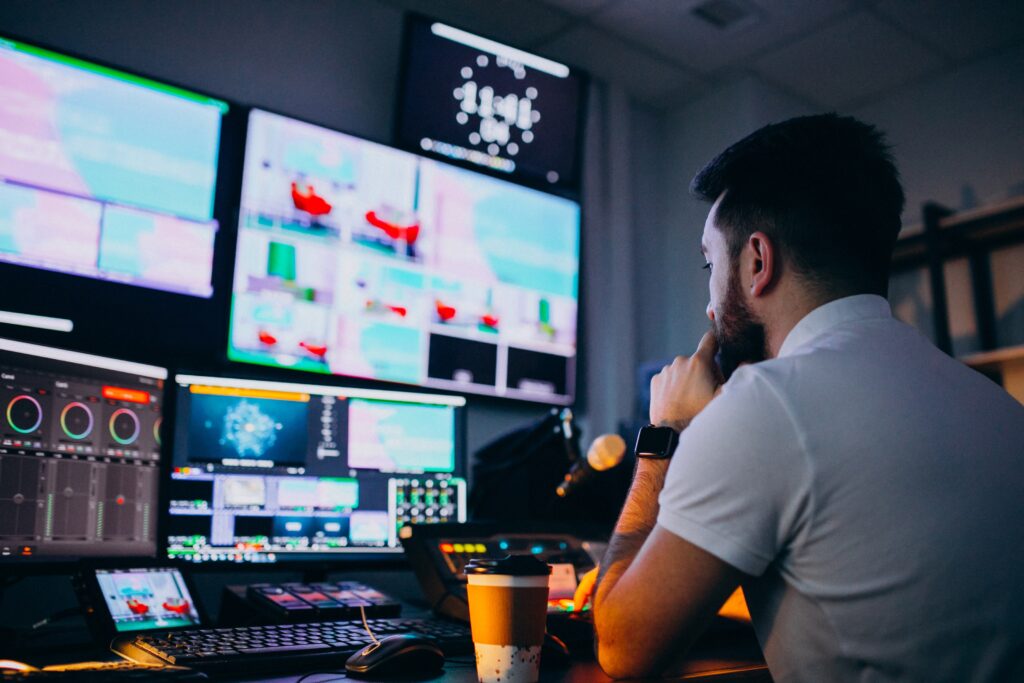Post production refers to every process after shooting a video. This phase is so important to ensure that raw content looks stunning and engaging. Read on to find out more about the importance of post-production.
Understanding Post-Production
Post-production is one of the phases in content production. For example, if you want to create a video, post-production is the process of steps taken after filming. In addition to post-production, there are other phases such as pre-production and production (filming/shooting).
The results of filming are still raw and need to be polished in terms of audio, color, visual effects, and text. Without post-production, a video is not ready to be shared with the audience. Content distribution, as the phase after post-production, requires comprehensive certainty.
If you use a video production service, they know every detail of post-production. When all details are managed well, the new content will be published.
The Importance of Post-Production
Post-production can add the final touches that make a video more harmonious, easy to understand, and engaging. Without this stage, a video cannot provide maximum benefit to the audience. As a post-production team, I will explain to you why this stage is so crucial for content production.
Avoiding Unnecessary Parts
The post production team will delete certain excessive parts. They know which parts are not important, especially if the video is short. The team can discuss with the client about which parts to highlight and which can be removed.
They don’t work alone because they must align with the initial vision. Typically, each scene is labeled to facilitate organization. If you want to create a short video, it becomes more challenging to determine which parts to include. Therefore, it’s essential to rely on a team with extensive experience working on short video projects.
Enhancing Various Technical Aspects
In post-production, many technical aspects are handled. The team will adjust color, sound, graphic effects, and more. All of this is necessary to ensure the video is comfortable for the audience to watch. A more engaging video will be watched longer by the audience, or can prevent them from skipping to another video.
It’s not just about stunning visuals but also about how every audio element aligns with the visuals. Whether it’s narration, background sound, or music, everything is adjusted to have an ideal volume. Sounds won’t overpower each other through proper mixing.
Clarifying the Core Message
When working on a video project, text is often needed. Text in videos should be kept as concise as possible so it doesn’t distract from the main subject. The lower third is one element that needs to be considered.
This type of text can explain the name of the interviewee, their job title, location, and so on. The placement of this text is so precise that it only appears in a small part of the video. Post production is also about how each clip is logically arranged to build the narrative flow.
The audience will find it easier to understand the main message if the scenes are systematically arranged. If there are errors in the previous phase, post-production can fix them. Various supporting elements can maintain the projection of the main message even if it was not optimal earlier.
Tips to Maximize Post-Production
Several factors can make post-production better or worse. In this stage, there are so many tasks or jobs, ranging from cutting clips, including audio, adding graphic effects, and many more. To maximize this phase in video production, here are some tips to keep in mind:
Communication is Key
Every team member must have easy access to communication. The better the communication within the post production team, the better the handling of every detail. Team members should understand each other through regular discussions.
Respect every piece of feedback to build a better team. Determine the best platform to support online collaboration. Though cliché, communication is very effective in avoiding misunderstandings. As you know, even a simple misunderstanding can have a significant impact on a project.
Invest in Technology
The production team needs to invest in advanced technology, including editing software. There are now many editing tools with powerful features that can make your videos look more professional, like what you see in the cinema. Choosing the right technology can also support work efficiency.
Time Management
Every video project has different deadlines, and it is important to manage them as wisely as possible. For clients, delays can be detrimental. However, the video production team needs sufficient time to maximize results.
Therefore, pre-production and post-production are interconnected. One aspect is how to agree on project deadlines. Even if deadlines are tight, the team should not be influenced by them.
Deadline pressure can have a negative impact if not anticipated properly. To avoid deadline pressure, create a realistic and comprehensive timeline. You can also rely on certain tools that can support project management. These tools can make it easier for you to monitor every process in post-production.
Budget Planning
A limited budget can impose its constraints on a video project. Post-production requires a significant budget for sound designers, licenses, experts, and software. The budget for a video project must be realistic to avoid limiting the production team, including during the post production phase.
In addition to the above aspects, there are other factors, such as feedback. For example, how producers, directors, and other teams provide constructive input. Each department must work based on the initial vision and give its best effort.





